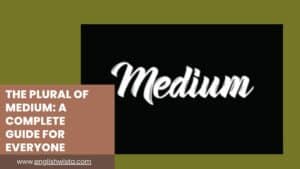Have you ever stood outside, looked up at your house, and wondered what the plural of “roof” is? Maybe you’ve heard different versions from different people. Some say “rooves,” while others insist it’s “roofs.” If you’re confused, you’re not alone. English can be tricky like that. Sometimes words change their form when they go from singular to plural, and sometimes they don’t.
This article is here to clear things up for you in a friendly, simple way. We’ll explore what the plural of “roof” really is, why people get confused, and how you can remember it easily. We’ll also look at examples, fun facts, and even the history of the word. By the end, you’ll feel confident every time you need to talk about more than one roof.
So, let’s take a closer look!
What is the plural of “roof”?
The straightforward answer is this: the plural of “roof” is “roofs.”
Yes, it’s that simple. If you’re talking about more than one roof, you just add an -s at the end.
- One roof → Two roofs
- The roof is old → The roofs are old
- That roof needs fixing → Those roofs need fixing
You might be thinking, “But wait, what about words like ‘hoof’ or ‘tooth’? Don’t they change differently?” That’s where the confusion comes in.
Why do people say “rooves”?
Some people believe the plural should be “rooves” because they’re comparing it to words like:
- hoof → hooves
- leaf → leaves
- loaf → loaves
In these examples, the “f” changes to “ves” in the plural. This pattern is correct for certain words in English, but “roof” does not follow this rule. Instead, it sticks with the simple “-s” ending.
Think of it like this:
- Some words ending in f change to ves (leaf → leaves).
- Some words ending in f stay with s (roof → roofs).
It may seem inconsistent, but that’s just the way English developed.
Is “rooves” ever correct?
Technically, “rooves” was used in older English, especially in British English centuries ago. You might find it in some old books or historical texts. But in modern English today, “roofs” is the standard plural used in both American and British English.
So, if you’re writing an essay, sending an email, or talking in everyday conversation, always use “roofs.” Using “rooves” will sound outdated or incorrect to most people.
Breaking it down: Singular vs. Plural
To make things crystal clear, let’s look at the forms side by side:
- Singular: roof
- Plural: roofs
Example sentences:
- The roof of the school is being repaired.
- The houses on this street all have red roofs.
Another example:
- The dog is sitting on the roof.
- After the storm, many roofs were damaged.
Notice how simple it is? Just add “s.”
Why doesn’t “roof” follow the “f → ves” rule?
Good question! The English language has many exceptions. The “f → ves” pattern only applies to certain words. For example:
- leaf → leaves
- wolf → wolves
- calf → calves
But not all “f” words follow it. Here are some that don’t:
- belief → beliefs
- cliff → cliffs
- chef → chefs
- roof → roofs
So the trick is: don’t assume every word ending in “f” changes the same way.
A simple rule of thumb
Here’s an easy way to remember:
- If the “f” sound is soft and connected to the word’s base (like leaf or wolf), it often changes to “ves.”
- If the “f” sound is harder or comes after a long vowel (like roof or chief), it usually just takes an “s.”
It’s not a perfect rule, but it works most of the time.
Real-life examples with “roofs”
Let’s practice with some sentences you might actually use.
- “After the hailstorm, several roofs had to be replaced.”
- “The neighborhood has houses with green and brown roofs.”
- “Workers climbed up to fix the roofs before the rainy season.”
- “Tourists took pictures of the colorful roofs in the old town.”
- “Our city skyline is full of buildings with shiny glass roofs.”
Each time, notice how natural “roofs” sounds.
Comparing “roof” with similar words
Sometimes, looking at similar words helps us see the difference.
- Roof → Roofs
- Hoof → Hooves
- Proof → Proofs
- Goof → Goofs
See the contrast? Even though “roof” and “hoof” look similar, their plurals are not the same.
Where does the word “roof” come from?
The word “roof” comes from Old English, spelled “rof.” It referred to the covering of a house or shelter. Over time, it kept a similar meaning. Interestingly, in Old English, plurals were formed differently, and sometimes “rooves” appeared as a form.
But as English standardized, “roofs” became the accepted version. Today, dictionaries and grammar guides agree that “roofs” is the correct plural.
Fun facts about roofs
While we’re here, let’s enjoy some fun little extras about the word and the thing itself:
- Different styles of roofs: Gable, flat, hip, dome, and more! Every culture has unique roof designs.
- Collective noun for roofs: There isn’t a common one, but you could playfully say “a row of roofs” or “a cluster of roofs.”
- In idioms: We use “roof” in expressions, like “raise the roof” (to make a lot of noise or excitement) or “hit the roof” (to become very angry).
Common mistakes to avoid
Here are the top mistakes learners make:
- Writing “rooves” instead of “roofs.”
- Thinking “roof” changes like “leaf.”
- Mixing it up with “hoof.”
If you stick to “roofs,” you’ll always be correct in modern English.
Quick practice exercise
Try to fill in the blanks with the correct plural form:
- The old houses had thatched ________.
- During the storm, several ________ were blown away.
- We could see the castle ________ from the hill.
Answers:
- roofs
- roofs
- roofs
Simple, right?
Why this matters
You might wonder, “Why does this even matter? People will understand me anyway.” That’s true, but using the correct plural helps you sound clear, confident, and correct. Whether you’re writing a school paper, speaking in class, or chatting with friends, it’s always nice to use words the right way.
Conclusion: The easy takeaway
So, what’s the plural of roof? The answer is roofs.
Even though “rooves” once appeared in older English, it’s not standard today. If you want to sound natural and correct, always go with “roofs.” Remember: not every word ending in “f” changes to “ves.” “Roof” is one of those words that keeps it simple.
Here’s your quick recap:
- Singular = roof
- Plural = roofs
- Example: “The roofs of the houses were covered in snow.”
The next time you’re talking about houses, buildings, or shelters, you won’t hesitate. You’ll know the right word, and you’ll use it with confidence.
Language can be tricky, but it’s also fun. And now you’ve added one more little piece of knowledge to your toolbox. So go ahead raise the roof with your new grammar skills!



